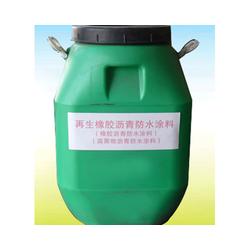防水涂料材质
Title: Exploring Waterproof Coatings: A Guide to Building Materials
Introduction to Waterproof Coatings
Waterproof coatings play a crucial role in protecting buildings and structures from water damage. Whether it's a residential, commercial, or industrial project, selecting the right waterproof coating is essential for ensuring durability and longevity. In this guide, we'll explore the world of waterproof coatings, focusing on types, applications, and considerations when choosing the ideal solution for your project.
Understanding Waterproof Coatings
Waterproof coatings are specialized materials applied to surfaces to prevent water penetration. They form a protective barrier that keeps water out, safeguarding the underlying structure from moisturerelated issues such as mold, mildew, and deterioration. These coatings are widely used in various industries, including construction, automotive, marine, and aerospace.
Types of Waterproof Coatings
1.
Acrylic Coatings:
Acrylicbased waterproof coatings are popular for their versatility and ease of application. They form a flexible, seamless membrane that adheres well to different surfaces, including concrete, wood, and metal. Acrylic coatings are suitable for both indoor and outdoor applications and can be tinted to match the desired color scheme.2.
Polyurethane Coatings:
Polyurethane coatings offer exceptional durability and resistance to UV rays, making them suitable for outdoor use. They provide a tough, waterproof membrane that withstands harsh weather conditions and mechanical stress. Polyurethane coatings are commonly used in roofing, flooring, and marine applications.3.
Epoxy Coatings:
Epoxybased waterproof coatings are known for their high strength and chemical resistance. They create a seamless, impermeable barrier that is ideal for areas exposed to heavy traffic or chemical spills. Epoxy coatings are commonly used in industrial settings, such as warehouses, factories, and garage floors.4.
Silicone Coatings:
Siliconebased waterproof coatings offer superior elasticity and weather resistance. They form a breathable membrane that allows moisture vapor to escape while preventing water ingress. Silicone coatings are suitable for both flat and sloped surfaces, making them ideal for roofs, decks, and balconies.5.
Cementitious Coatings:
Cementitious waterproof coatings are composed of cement, sand, and polymers. They bond tightly to concrete substrates, providing excellent adhesion and durability. Cementitious coatings are commonly used in belowgrade applications, such as basements, tunnels, and foundations.Applications of Waterproof Coatings
1.
Roofing:
Waterproof coatings are extensively used in roofing systems to protect buildings from water infiltration. Whether it's a flat roof or a sloped roof, applying a waterproof coating can enhance durability and extend the lifespan of the roof.2.
Basements:
Basements are prone to water seepage and moisture buildup, making them susceptible to mold and mildew growth. Waterproof coatings create a barrier against water intrusion, keeping basements dry and habitable.3.
Swimming Pools:
Waterproof coatings are essential for sealing and protecting swimming pools from leaks and water damage. They provide a watertight seal that prevents water from seeping into the surrounding soil and structures.4.
Bathrooms:
In residential and commercial buildings, waterproof coatings are applied to bathroom surfaces, including floors, walls, and shower stalls. These coatings prevent water damage and ensure a hygienic environment.5.
Bridges and Infrastructure:
Waterproof coatings are used in bridge decks, tunnels, and other infrastructure projects to protect concrete structures from corrosion and deterioration caused by water and chemical exposure.Considerations When Choosing Waterproof Coatings
1.
Substrate Compatibility:
Ensure that the waterproof coating is compatible with the substrate material to achieve proper adhesion and performance.2.
Environmental Conditions:
Consider the climate and weather conditions of the project site to select a waterproof coating that can withstand temperature fluctuations, UV exposure, and moisture levels.3.
Durability and Longevity:
Choose a waterproof coating with excellent durability and longterm performance to minimize maintenance and repair costs over time.4.
Application Method:
Evaluate the application method of the waterproof coating, whether it's sprayapplied, rollerapplied, or brushapplied, to determine suitability for the project requirements.5.
Regulatory Compliance:
Verify that the chosen waterproof coating complies with relevant industry standards and regulations for quality and safety.Conclusion
Waterproof coatings are indispensable for protecting buildings and structures from water damage and ensuring their longevity. By understanding the different types of waterproof coatings, their applications, and key considerations, you can make informed decisions when selecting the right solution for your project. Whether it's a roof, basement, swimming pool, or infrastructure project, investing in highquality waterproof coatings is essential for maintaining the integrity and performance of the built environment.
References:
[Building Materials Waterproof Coating A Brief Introduction](https://www.researchgate.net/publication/342848408_Building_Materials_Waterproof_Coating__A_Brief_Introduction)
[Types of Waterproofing Materials and Their Applications in Building Construction](https://theconstructor.org/building/typeswaterproofingmaterialsbuildingconstruction/13268/)

[Waterproof Coatings: Technologies and Global Markets](https://www.bccresearch.com/marketresearch/advancedmaterials/waterproofcoatingstechnologiesmarketreport.html)
标签: 防水涂料生产线 防水涂料图集 防水涂料材质 防水涂料厂家地址 防水涂料教程
相关文章
-
空军发言人,如今飞机再也不用飞两遍详细阅读

在空军部队中,飞机是执行各种任务的重要装备之一,在过去,飞机在完成任务时可能需要飞两遍,随着科技的进步和技术的不断发展,如今飞机再也不用飞两遍,在过去...
2025-03-31 19
-
东北夫妻称开店疑遭刁难,当地回应详细阅读

一对东北夫妻在网上发布了一段视频,声称他们在当地开店时遇到了刁难,视频中,这对夫妻讲述了他们的遭遇,并展示了相关证据,当地相关部门对此事进行了回应,这...
2025-03-31 18
-
蒙牛净利润暴跌98%揭示背后的原因和影响详细阅读

在乳制品行业,蒙牛一直是中国市场上的巨头之一,最近蒙牛的净利润暴跌了98%,这引发了人们对该公司业绩的担忧,本文将深入探讨蒙牛的净利润暴跌的原因和影响...
2025-03-30 18
-
防水冲锋衣会致女性不孕?假详细阅读

亲爱的读者朋友们,今天我们来探讨一个有趣的话题——防水冲锋衣是否会致女性不孕,让我们了解一下防水冲锋衣,防水冲锋衣是一种特殊设计的服装,主要用于防止水...
2025-03-30 18
-
缅甸强震事件,并非意外,而是早有预警详细阅读

根据最新的报道,缅甸于2021年8月21日发生了一次强震,震中位于北纬25.94°,东经95.82°,震级为7.4,这次地震在短短不到一周的时间内,已...
2025-03-30 18
-
女子游泳被教练偷拍发网上宣传详细阅读

在一份报告中,一位女子声称她的教练偷拍了她的游泳照片,并将其发布到网上进行宣传,这种事件不仅令人震惊,而且引发了人们对隐私和道德问题的深思,据报道,这...
2025-03-30 19
-
戚薇二胎产子画面曝光详细阅读

戚薇在社交媒体上宣布了她的二胎产子喜讯,并晒出了产子的画面,这一消息引起了广大网友的关注和祝福,戚薇是一位备受喜爱的中国女演员和歌手,她以其出色的演技...
2025-03-30 17
-
90后小伙备孕每天吃8个生蚝吃到吐详细阅读

90后小伙备孕每天吃8个生蚝吃到吐在当下社会,不孕不育的问题已经成为许多年轻人关注的焦点,为了拥有一个健康的宝宝,许多90后小伙开始注重备孕,而在这个...
2025-03-29 18

发表评论